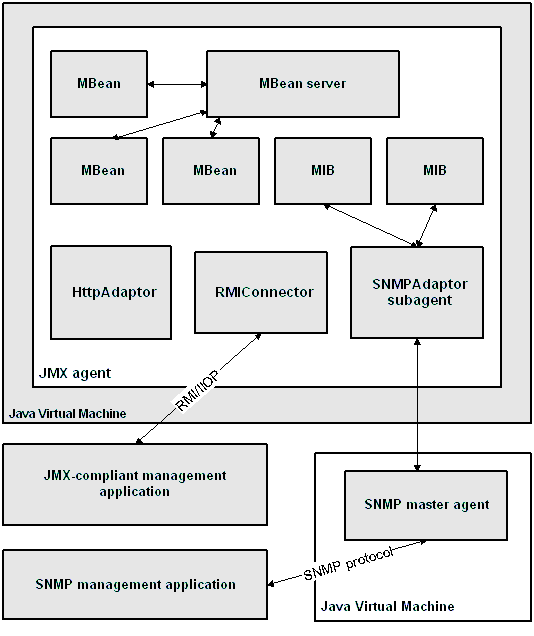Systems Management exposes management and monitoring functionalities to other applications, such as the Simple Network Management Protocol (SNMP) and JMX-compliant management applications.
JMX is both an architecture and a set of APIs designed to help manage system components. It allows Java clients to view management-related information, and to perform management operations on these components. For more details about JMX, see the Sun JMX home page.
Systems Management uses the MX4J implementation of the JMX version 1.2 API. For information about MX4J, see the MX4J Web page. A JMX system consists of a JMX MBean server and certain services—together known as an JMX agent—and a set of MBeans, which provides the management logic. The MBeans are Java objects that expose management information and operations to clients of the JMX MBean server. These clients can exist within the same VM, or in separate VMs.
The JMX API defines the interfaces that clients must use to access the MBeans. For remote clients, the current JMX release does not fully define the architecture or APIs to be used. Sybase uses the connector approach provided by the MX4J release. This works over remote method invocations (RMI), and replicates the same VM API, remotely. Remote clients obtain handles on the JMX MBean server, which look like local handles; they implement the same interfaces that local clients can access. Some restrictions exist for remote clients, but the basic JMX API is supported, except for a small number of methods that are appropriate only for local access to the MBean server.
Figure 14-1: Systems Management architecture
